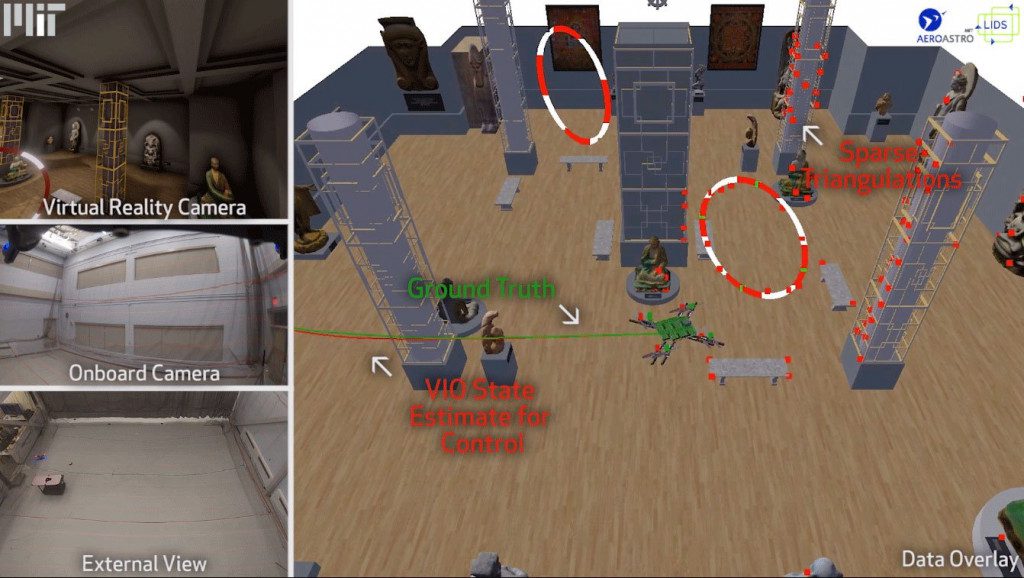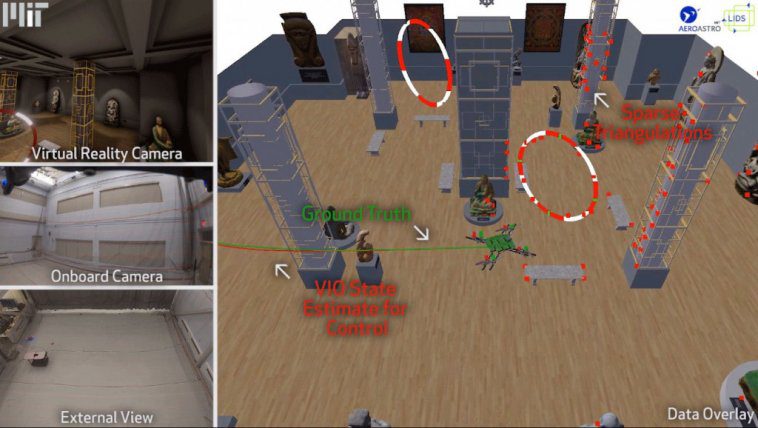Engineers from MIT have built a virtual reality system for drones which they hope will reduce the frequency that the pilotless aircraft crash during training. The VR training system is called “Flight Goggles”.
Training autonomous drones to fly quickly currently means relying on enclosed grounds with a range of physical objects. These objects can cause a lot of damage to the vehicles, increasing a project’s cost. As a result, engineers are resigned to the fact that regular repairs and replacements are necessary.
However, engineers from MIT are not. This week, a team of researchers will present a virtual training system for drones at the IEEE International Conference on Robotics and Automation.
The idea is that the new system will enable researchers to test drones in empty rooms while the vehicles are actually “seeing” a rich, virtual world. The VR training system is called “Flight Goggles” for drones.
A testbed for a range of challenging new conditions and environments, the system allows for artificially intelligent drones to learn without the potentially damaging physical obstacles. The researchers hope that this system will greatly reduce the number of crashes while training to fly drones fast.
“We think this is a game-changer in the development of drone technology, for drones that go fast. If anything, the system can make autonomous vehicles more responsive, faster, and more efficient,” explains Sertac Karaman, Associate Professor of Aeronautics and Astronautics at MIT.
Beaming Photorealistic Scenes to a Flying Drone
The scientists use an image rendering program to draw up photorealistic scenes. They then beam the scenes to the drone as it flies around an empty space. Impressively, preparing the virtual pictures is three times as quick as the human eye can see and process images.
Enabling this is a camera, inertial measurement unit and custom-built circuit boards that integrate a powerful embedded supercomputer. This hardware fits into a 3D printed carbon-fiber-reinforced and nylon drone frame.
“The system is highly malleable. For instance, researchers can pipe in their own scenes or layouts in which to train drones, including detailed, drone-mapped replicas of actual buildings — something the team is considering doing with MIT’s Stata Center. The training system may also be used to test out new sensors, or specifications for existing sensors, to see how they might handle on a fast-flying drone,” adds Karaman.
So far, the researchers tested the system by creating a virtual lounge room with a virtual window for the drone to fly through. The drone successfully flew through the window at 5 miles per hour 361 times during 10 test flights. It only crashed three times.
Finally, the researchers brought a real window into the test facility and turned on the drone’s camera, enabling it to “see” its actual surroundings. Over eight flights, the drone flew through the real window 119 times, crashing or needing help just six times.
In the future, the team intends to train drones to fly safely alongside humans. Karaman adds: “There are a lot of mind-bending experiments you can do in this whole virtual reality thing. Over time, we will showcase all the things you can do.”
Source: MIT News

Website: LINK


